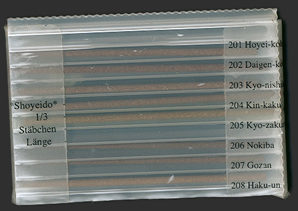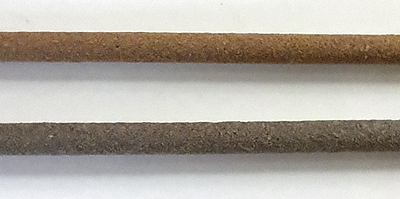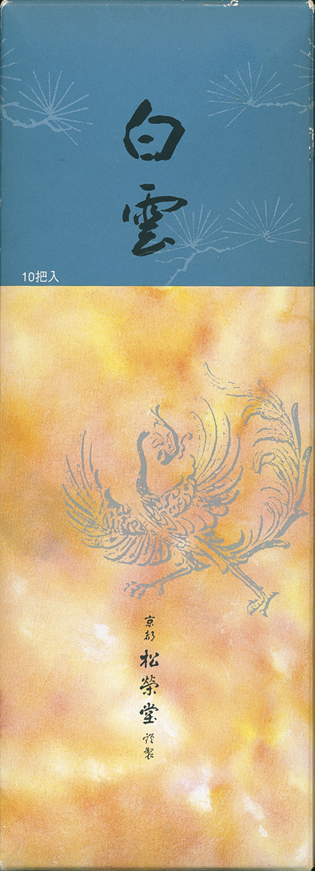Shoyeido – Haku-un | White Could

This is the second, opened bulk package of the Daily Incense line by Shoyeido that I managed to grab on kleinanzeigen.de in February 2022. Such a box contains 10 rolls, each with about 35 sticks that have a burning time of around 50 minutes.
However, in Germany, the boxed packaging variant, which contains the same number of sticks, is more common. You can see all variants on the Shoyeido‘s official US website.
White Cloud is the most expensive scent in this line. The prices of individual rolls or boxes vary on the German market from about 14€ to over 18€.
Ingredients: Sandalwood, Agarwood (Aquilaria agallocha), Benzoin (Styrax benzoin), Borneol camphor, and spices.
At first, I wasn’t sure whether to buy White Cloud at all; in the end, I only decided to purchase them as well because the price was so good. I was sure that if I didn’t like them, I could resell them at the same price. After all, one roll costs up to 18€, and I paid 20€ for 7 rolls back then. A nice bargain.
Well, what can I say? From the first moment, I was thrilled with White Cloud.
The scent is hard to describe. It is spicy in a unique way. I find it has both a warm and a cooling element. I would describe it as calm, and I perceive it as rather dark and deep. The scent feels strengthening, uplifting, and encouraging to me.
Initially, I had trouble finding anything sweet in the profile. They were one of my first Japanese incense sticks in general, and compared to Indian ones, it’s a whole different world.
It’s no surprise that Japanese incense sticks are often described with adjectives like ‘quiet’ or ‘gentle’; you have to listen to them attentively, as they don’t scream their notes.
There was a phase of several weeks when White Cloud reminded me of the smell of my cat’s dry food. Fortunately, that didn’t last long. I think during this phase, my nose discovered the umami note in White Cloud, and I was hyper-fixated on that scent for a while. I have often read that people find a ‘curry note’ in these and other Japanese incense sticks, and I think that’s what I mean here. This scent apparently comes from an ingredient called Reiryo koh, often translated as fenugreek, but it probably actually refers to Gold Coin Grass, a subspecies of the Lysimachia, which when dried has a fenugreek-like curry scent. Here is a very interesting r/Incense post for those who are eager to learn more.
However, it also seems to me that part of this scent could come from agarwood.
When I compare the incense sticks from my roll with those from the mini-sample, I notice small differences: Their aroma feels milder to me, even though they appear slightly more potent in strength.
The biggest difference is that in the sample, I clearly smell a sandalwood note, which I can only partially isolate in the roll version. I’m under the impression, that there is less of the scent I attribute to agarwood. They have a bit less umami and are a touch sweeter or softer. The interplay of warmth and coolness is not present to the same extent; I perceive the scent of the sample as tending to be warm.
Nevertheless, it is clearly recognizable as the same incense, which is not the case with all varieties.


On top, the sampler stick; below, the version out of the roll.
Since I cannot be sure how new the sample is and only know that the incense sticks from the rolls are about 5 years old at this point (2023), it’s hard to say what causes the difference and whether newer rolls might now smell different as well.
I’ve read that the White Cloud recipe has been revised and now contains less of the increasingly expensive raw material agarwood. So, I might have been really lucky to have got a pack of the old formulation. By the way, the flyer that comes with the sampler only mentions the ingredients: sandalwood, Borneol camphor, and spices.
Do you know White Cloud? What is your opinion – has the formula changed?

